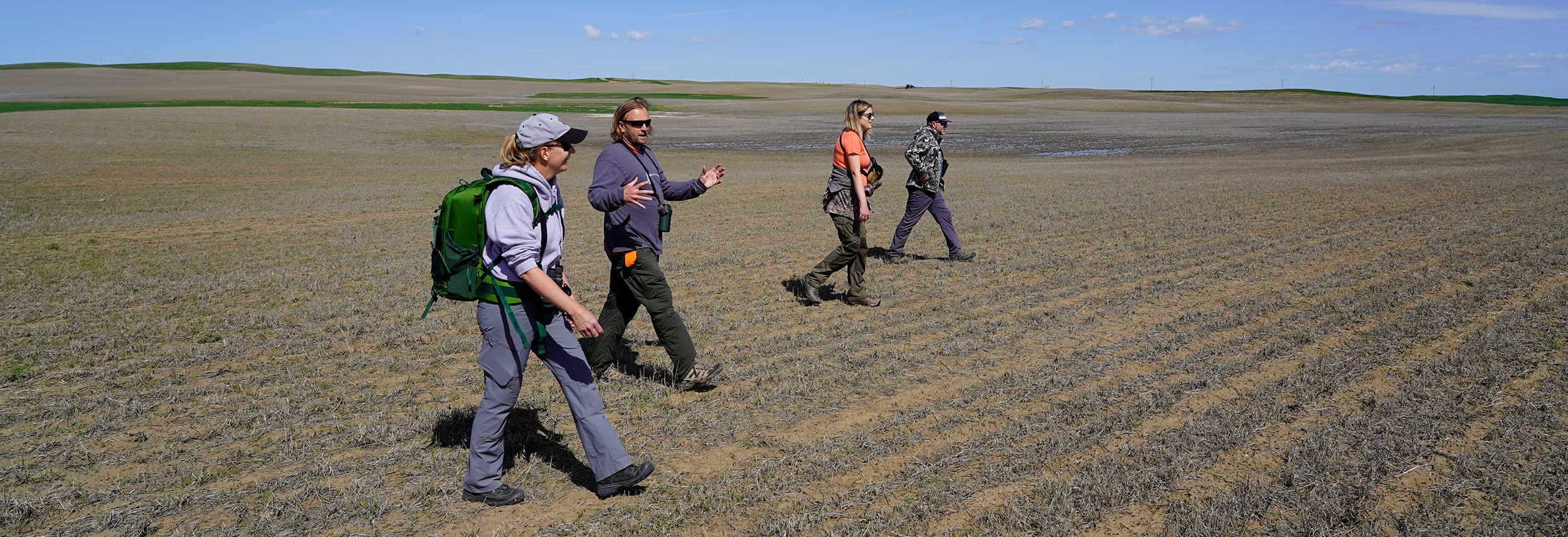
Back Cast
There’s six of us, walking abreast roughly 10 feet apart in a stubble field looking for a bird that doesn’t want to be found, safeguarding the singular reason she and her mate migrated hundreds of miles earlier this spring to this corner of Bowman County.
I so want to be the person to heroically spy the well-camouflaged bird and nest, tiptoe away nonchalantly and point out my find at a safe distance to the experts in the group. Even more, and this thought nags at me as I occasionally stumble through the field absently thinking about lunch and wishing I wouldn’t have left my water bottle in the vehicle, that I don’t want to be the guy who unintentionally steps on what we are trying so hard to find with my size 12 hiking boot.
What we’re searching for is a female long-billed curlew, North America’s largest shorebird, sitting on a nest that likely harbors four eggs bigger than chickens lay. For curlew newbies, and I was one of them before watching a handful through binoculars earlier, this bird certainly stands out in this grassland/agriculture landscape as it’s about the size of say, a sharp-tailed grouse. It has a long sickle-shaped bill that, I continue to imagine, looks a lot like any old, random stick in the terrain we’re walking.
Before we even start our search, we’re told the odds of finding the curlew is about 10%. Cruddy odds, certainly, but I’m up for the hike and tired of watching these cool birds since sunrise from a quarter mile through optics.
The idea is to cover as much ground as possible, without skipping any in our search area. We’re told stories by researchers about walking past nesting curlews because the birds blend so well into their surroundings. We hear that the birds will oftentimes nest near cowpies that possibly helps conceal them somehow or provides some sort of visual reference when they need to find the nest after feeding, bathing and preening elsewhere.
Yet, no one says anything about that time someone accidentally stepped on a bird and its eggs and bummed everyone out.
Once we start walking slowly abreast, everything and nothing looks like a curlew hunkered motionless on a nest. I see several black beetles that I’ve been told the birds feed on. There is sign of a badger having done some dirt work recently. And, of course, there are many cowpies, but none with nesting neighbors.
Once we get to the end of our first pass and it’s time to turn and head back in the direction in which we came, our group swings like a metal gate opening, with one person staying put imitating the gate’s hinge.
We do this for 45 minutes to an hour. Several oil field workers drive by, but I doubt that they notice us. The landowner, who likes curlews on his property and applauds the research, drives his farming equipment back and forth off in the distance. A small airplane flies low over our chain of searchers once, twice, three times. I can’t imagine what the pilot thinks we’re doing, but I’m guessing the odds are better than 10% that he or she has witnessed weirder from up there.

